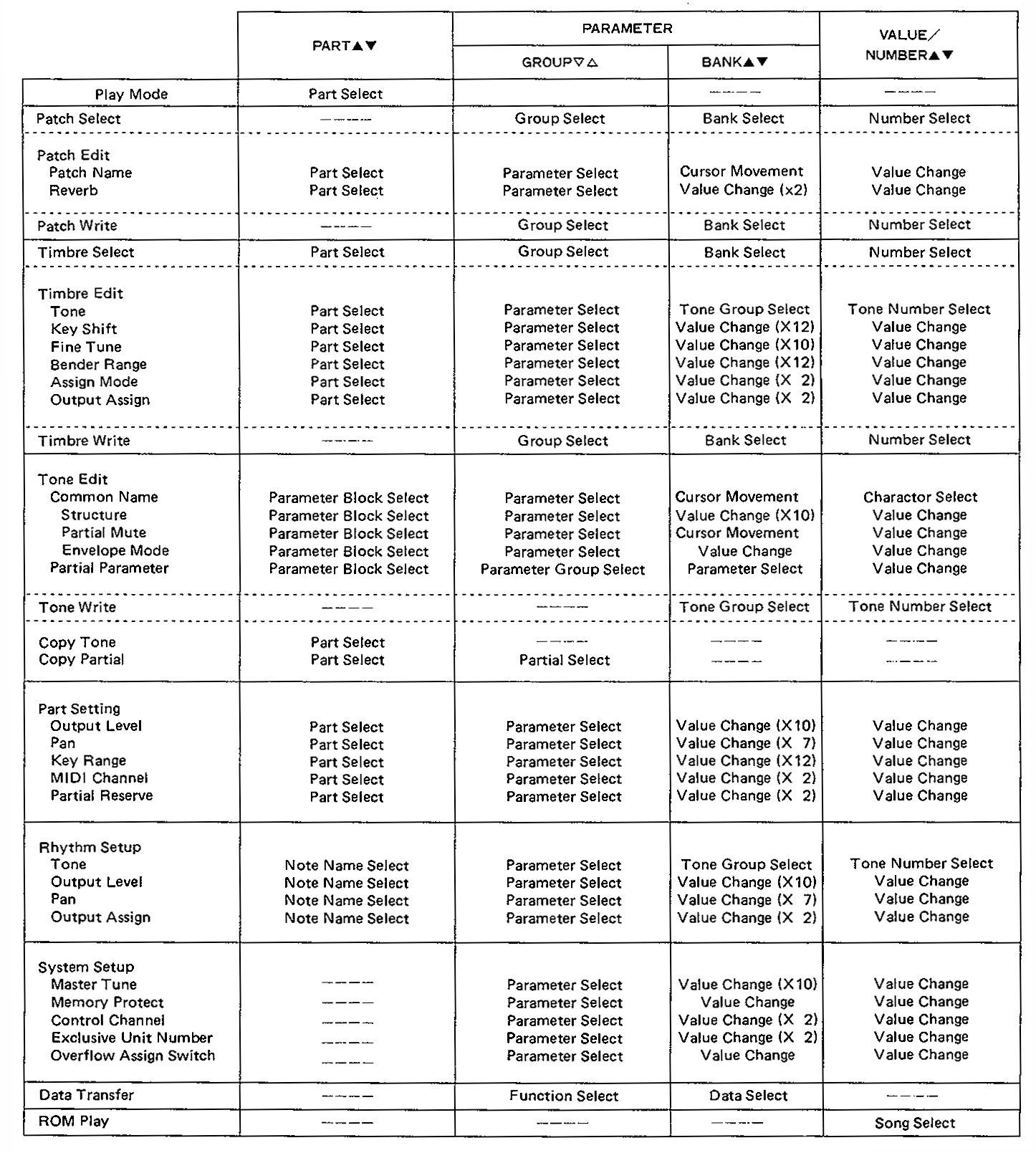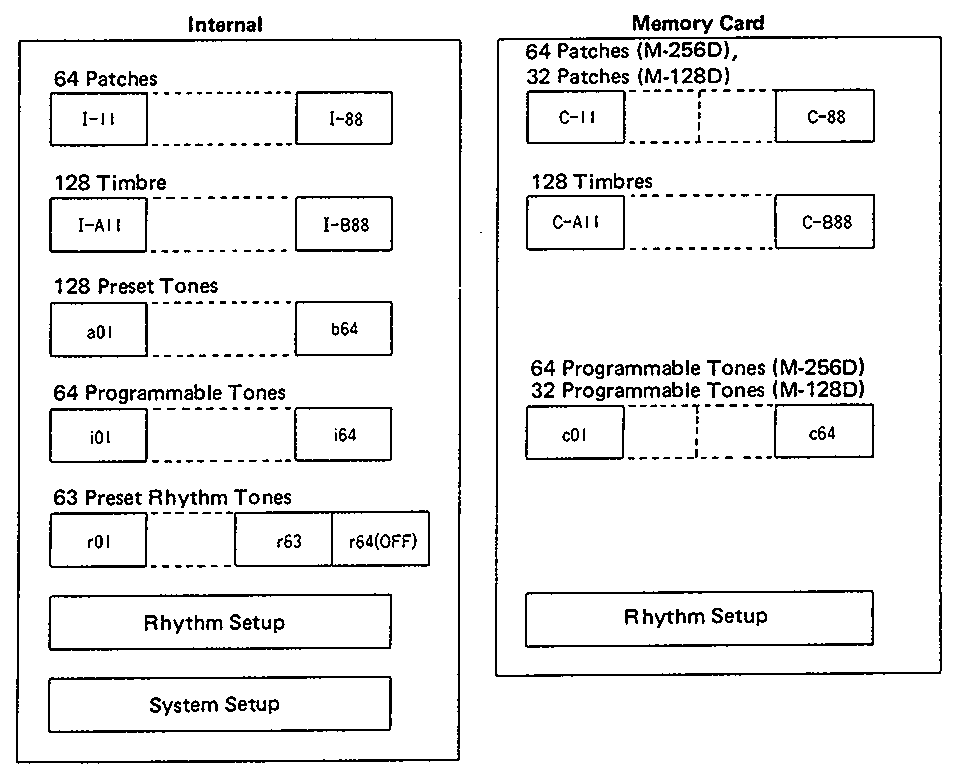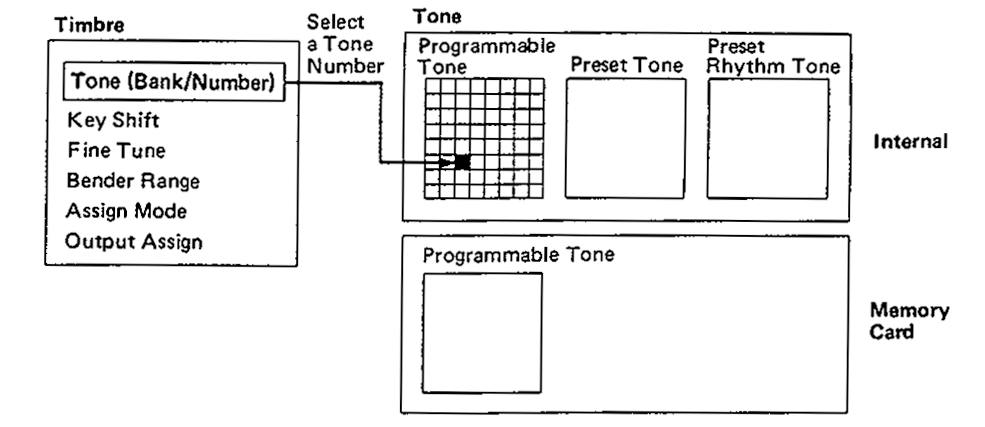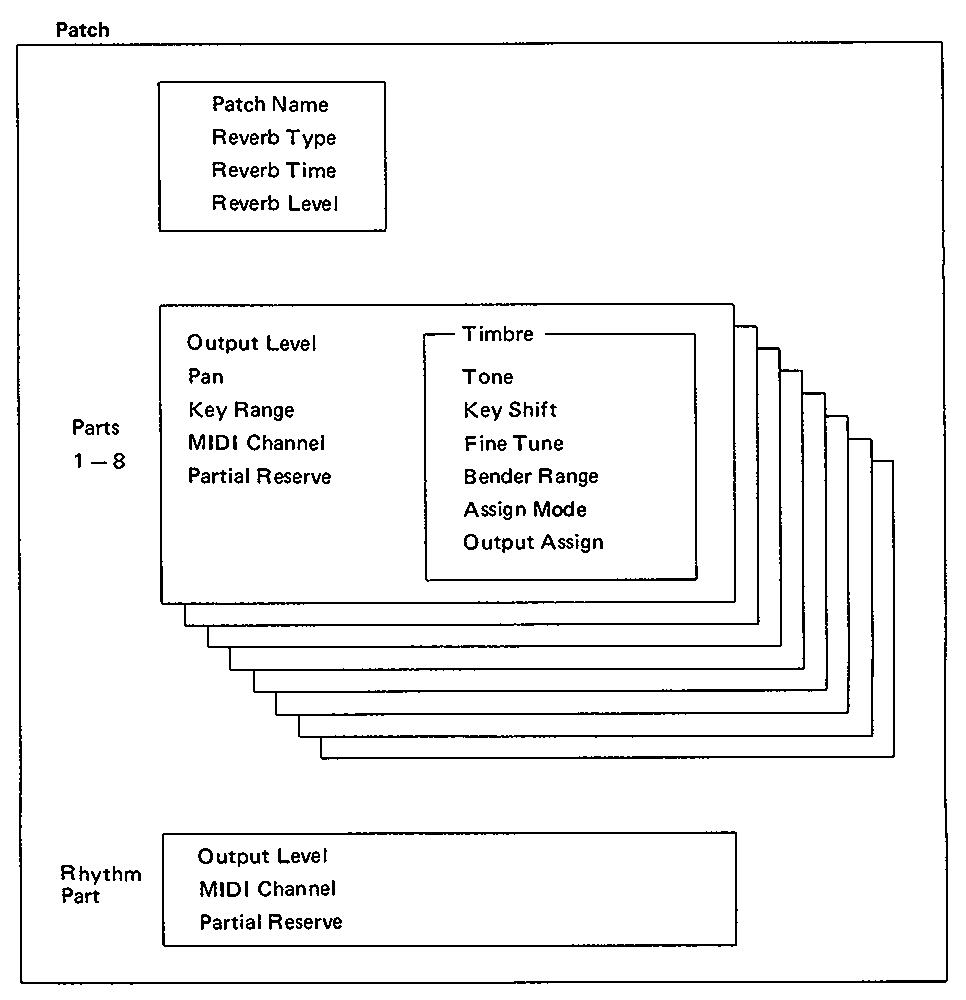Roland D-110: Editing Parameters
In the advanced section of the D110 manual we have section relating to parameter editing
[BASIC PROCEDURES]
1. Basic Procedure for Editing Parameters
The D-110 has several modes and a great many parameters, offering sound synthesis and various effects using the Multi Timbral function.
To edit a parameter, you should turn the unit to the appropriate mode for the each parameter.
The following shows how the relevant buttons work in each mode.
 1: When a writing or copying is completed or EXIT is pushed.
1: When a writing or copying is completed or EXIT is pushed.
2: When the Rhythm Part is selected.
* If you cannot remember which mode you are in, push EXIT until the unit returns to the Play mode.
Depending on which mode is currently selected:
and VALUE/NUMBER ![]() buttons function differently.
buttons function differently.
2. Memory
[Data which can be written in the internal memory or on a memory card]
There are several different types of data, such as Patch, Timber, Tone, etc.
Each data unit consists of different things.
The D-110’s internal memory and a memory card (M-256D or M•128D) can store the following data.
[What each unit consist of?]
• Tone
A Tone consists of Common and Partial blocks.
• Timbre
A Timbre consists of Timbre Parameters; Tone Select, Key Shift, Fine Tune, Bender Range, Assign Mode, Output Assign. In other words, a Timbre is made of Tones and performance controlling functions. A Timbre, however, does not contain
a Tone itself
Tones which can be assigned to a Timbre are as follows:
Preset Tones(a, b, or r group) can be assigned to the Timbres either the Internal or on a Memory Card.
Programmable Tones are assigned to the Timbres in the corresponding memory.
A Programmable Tone in the Internal memory assigned to the Timbre in the Internal memory and that in a memory card to the Timbre in a memory card.
While you are writing a Timbre onto a memory card, if a Tone in the Internal memory(i group) is assigned to that Timbre, it will be automatically changed to a Tone in the Internal memory(c group).
• Patch
A patch consists of Patch Parameters;
A Patch involves the contents of the Timbre assigned to each Part, but not number assignment.
If a different Timbre is selected with the Timbre Select parameter or Program Change messages, the data itself will be copied from the Timbre.
Therefore, the Patch Writing procedure can write the Timbre you have edited in a Patch, but not into a Timbre memory.
To write it into a Timbre memory, you must follow the Timbre Writing procedure.

• Rhythm Setup
Each Key Number (24 – 108) of the Rhythm Part has parameters of Tone Select, Level, Pan and Output Assign.
Each Key Number can use any of the 63 Preset Rhythm Tones or the user’s programmable 64 Tones.
Tone Numbers are written in the Rhythm Setup.
• System Setup
This consists of the Master Tune, Memory Protect, Control Channel, Exclusive Unit Number and Overflow Assign Switch parameters.






